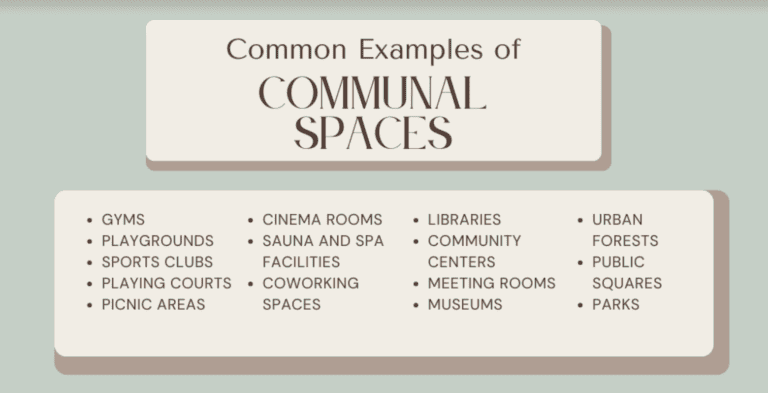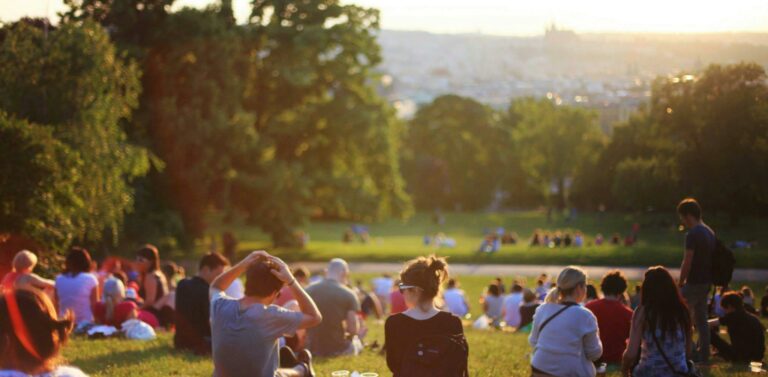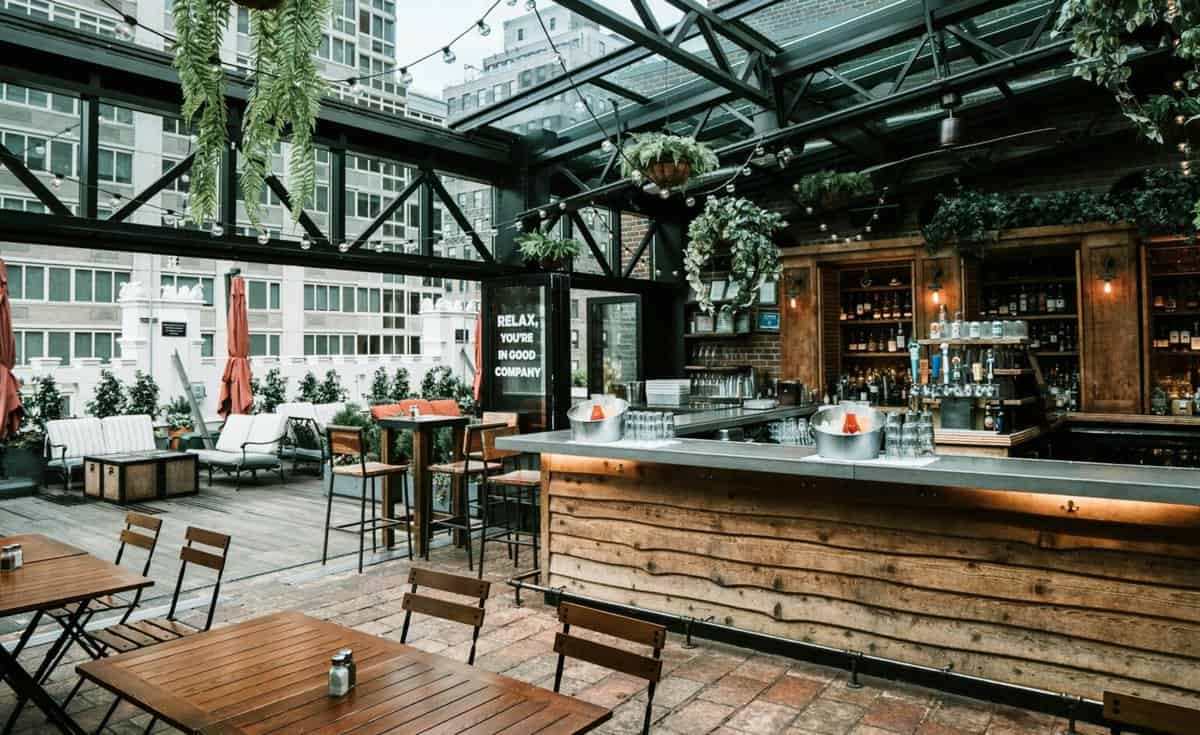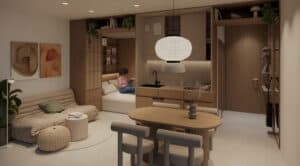The sharing economy is now part of our everyday lives. We encounter it in ride-sharing, clothing rentals, and communal spaces. These shared areas have become more common due to co-living. With its kinds, benefits, and locations, here is all you need to know about communal spaces.
Basics of Communal Spaces
People gather to work, socialize, relax, or play in communal spaces. These include small shops, cafes, leisure areas, and coworking rooms. Common areas allow people to connect and have meaningful experiences. As a result, these settings foster a sense of community.
Kinds of Communal Spaces
Urban architecture includes many kinds of common areas. Examples include gyms, cinema rooms, picnic areas, and spa facilities. There are also coworking spaces, libraries, and meeting rooms. In co-living setups, the common areas are kitchens, laundry rooms, and lounges.

Communal spaces have various purposes, contexts, and locations. These are the town squares, libraries, and parks in big cities. In offices, these are the pantries, lounges, and function rooms. Apartment buildings or shared housing have pools, barbecue areas, and terraces. Do note that these are only the communal spaces we are familiar with. There are more of them in many places in the world.
Benefits of Communal Spaces
Common spaces foster communities through harmony and group effort. They make places like cities, apartment buildings, and offices convivial. Let us share with you some ways communal spaces uplift these settings:
Communal Spaces in Apartment Buildings
Apartment buildings continue to thrive worldwide. In 2022, 47.5% of Europe’s population lived in an apartment. Spain (66%), Latvia (65%), and Germany (63%) show high rates of apartment living. On a different note, apartment living causes loneliness. Communal spaces help ease loneliness in apartment buildings through these:
Great Fulfillment
Communal spaces in an apartment building are for residents to use. Maintaining these common areas is a group effort. These spaces allow people to contribute to the property. Residents can help clean up the terrace or return equipment to the right place. When residents feel involved in communal spaces, they use and enjoy them more.
Bond and Enjoyment
Shared spaces let people have their leisure time alongside others. These allow them to have positive experiences and connect. For example, you can meet your next workout buddy in the gym. You can even collaborate with others in the coworking room. The pool and rooftop terrace could be where you hang out with neighbors. Common areas let you have leisure and company right where you live.
Sense of Belonging
You don’t have to live in a gated village to connect with your neighbors. Common areas in apartment structures can foster community ties. These are exclusive to residents, offering a sense of belonging.

Communal Spaces in Cities
Public city spaces let larger groups of people gather to create communities. These are even called the “living rooms, gardens, and corridors” of urban areas. Through social and economic mobility, common areas improve life. Read on to find out more about the ways communal spaces enhance city living:
Getting Closer
Well-lit and populated community spaces suit daily routines. In turn, these help make everyone more familiar with each other. For example, we can run into the same people at the park. We can even encounter familiar faces in the library when we visit. As we continue these routines, we become more used to each other. This closeness leads to connections and stronger ties.
Better Health
Open spaces let people move freely and unwind from city life. In the ovals, we can play sports with others. We can exercise or hang out with friends in parks. These promote physical stimulation, while social interactions improve mental health. And when people are healthier, the better it is for the community.
Eco-friendly Living
City public spaces include green areas that connect us with nature. These help the environment by cutting down on pollution. But these benefits are not limited to greenery. This is because communal areas promote mobility and openness. The more communal areas there are, the more walkable a place is. This aspect is why designing cities for people over vehicles is vital. With this, cities can have more open spaces than carbon emissions.
Economic Growth
Communal spaces are free of charge most of the time. But they can also benefit the economy. In the U.S., the value of properties near parks and trails is five percent higher than usual. These places gather many people, making them perfect for businesses. Communal spaces also boost tourism. People also look for common areas like parks when choosing their next destinations.

Communal Spaces in Offices
Employees’ well-being and job satisfaction improve the workplace. But working while stuck at your desk all day can lead to stress. This is why communal spaces are ideal for the office. Their presence in the workplace changes hectic setups. Spaces like recreational areas, lounges, and pantries make offices more comfortable and pleasant. This improvement makes people feel more fulfilled in their roles and more goal-driven. Learn how these collaborative settings enhance workplace experiences:
Creativity Boost
Communal spaces are where people gather and interact. In the office, these interactions turn into a group effort. When people work with each other, they have new ideas and solutions. This is because communal spaces are where employees can refresh their minds. An enhanced workplace leads to better performance and outputs.
Sense of Agency
Communal spaces give employees options for where to work or even take breaks. An example would be the function rooms for meetings or events. Employees can rest in the lounge or have coffee in the pantry. Common areas give people flexibility and autonomy in their jobs. People are more efficient when they are in charge of their routines.

Challenges in Communal Spaces in Buildings
Communal spaces are beneficial for communities. But sometimes, there can also be issues. Let’s have a look at the challenges you may face:
- Inadequate space: A communal space accommodates many people. But when these get crowded, the occupied space seems overwhelming and scarce.
- Privacy concerns: Communal spaces can make people feel a lack of privacy. A person may not be comfortable being alone around strangers. Examples include studying in the library or swimming in the pool. People may not be at peace when they feel exposed or watched.
- Lack of safety: When unsatisfied with a space’s privacy, people may also feel unsafe. Occupants may not trust each other, especially if they are strangers. Shabby facilities and amenities also cause safety concerns. Defective kitchens and barbecue areas may have fire hazards. Mismanaged pool areas and gyms can lead to accidents.
- Disagreements in shared resources: Shared resources are also part of communal spaces. Examples include utensils in a home or towels in gyms and pools. There may be issues when items are missing, used without consent, or left unclean. Theft, misplaced equipment, and late fee payments can cause more conflict.
Overcoming Challenges
While communal spaces can have issues, there are ways to solve them. You can read more about this in The Challenges of Coliving. But for now, we’ll help you with the problems mentioned above.
- Avoid peak hours for less crowds: Communal spaces cater to interactions and communities. But they can be overwhelming when crowded. The chances of having these spaces all to ourselves are few. But you can visit them during low peak hours to maximize the space. As for shared lounges and kitchens, decluttering or rearranging make room.
- Trust, communication, and care: Maintaining privacy in a space is all about trusting others. Communicate your concerns with flatmates and set proper boundaries. Another way to create trust with them is via bonding. Go out for brunch or post-dinner drinks. Better yet, join team-building activities for stronger bonds. As for your side, the little things count. Knock on the door before entering or ask for their permission regarding visitors.
- Background checks: Security and safety are priorities in any place. This is why we must address any issues with these two. Choose co-living companies that thoroughly check tenants. This system groups like-minded people for stronger connections. Make sure to practice due diligence by yourself. Secure valuables and be mindful of dubious behaviour.
- Set ground rules and responsibilities: Setting ground rules helps avoid disputes. These terms may be about sharing items, chores, quiet hours, and visitors. For issues with flatmates, open conversation is the way to go. Handling conflict is all about maturity and empathy. Listen to all sides, and have a resolution that benefits everyone.
Conclusion
Communal spaces allow people to gather as a community. Through social harmony, they improve the quality of living. These settings suit various kinds of people and activities. They are also in many places, like cities, workplaces, and housing. Apartment buildings provide independence as well as isolation. Communal spaces transform these by giving residents a sense of belonging. Gyms, pools, and lounges are its prime examples. Common spaces enhance workplaces by providing comfort and freedom. These improvements help improve employee well-being and job satisfaction. In big cities, public spaces reduce carbon emissions and make streets walkable. Communal settings also contribute to the economy by promoting local businesses and tourism.
The Citylifer Perspective
The Citylifer makes communal spaces for social interaction. Offering privacy and connection, we redefine modern co-living.
Safe and Intimate Communities
At The Citylifer, the community comes above all. We aim to foster connections while maintaining bonds. This goal is why we limit each community cluster to 25 residents. These clusters share a “Family Room” for cooking, dining, leisure, and more. This arrangement creates a setting where friendships can flourish. It also enhances people’s sense of safety and satisfaction with the space.
Balancing Privacy and Community
The Citylifer knows the importance of having personal space. This is why our residents have their self-contained studio apartments, which feature a private kitchen and bathroom. We focus on combining autonomy with shared living. For comfort, our studios optimize storage and purpose. Our innovative “High Five” furniture set helps you transform your studio any way you want. You can turn it into a bedroom, office, or games room. Need more storage? Options are available within the building.
Community Above All Else
Community is the key to our design. It is why we focus on residents’ well-being and social cohesion. Because of this, we include these layers of community:
- Family room: We divide our buildings into community clusters. Each of these can accommodate 15 to 25 people. They all share an exclusive, fully equipped family room.
- Shared areas: Our properties feature shared areas exclusive to residents. These include rooftops and gaming rooms.
- Public areas: With a strategic ground floor position, these are where residents connect and foster communities.
Quiet and private spaces
At The Citylifer, we have soundproof rooms for your peaceful moments. We understand the need for a quiet spot in the middle of the city.
FAQ
Communal spaces are places where people gather. They can interact, work, socialize, relax, or play in these areas.
They can be everywhere. Communal spaces are more about their purpose than where they are. But they are commonly present in cities, offices, and apartment buildings.
It depends. Some spaces need fees, while some are free of charge, like town squares and parks.
Communal spaces allow people to gather and connect. They enhance many places, such as offices and apartment buildings. In cities, they promote convenience and connection with nature.
For example, you can have your own bedroom and keep it as a private space even in a shared apartment. Arrangements vary by provider and contract, however.





